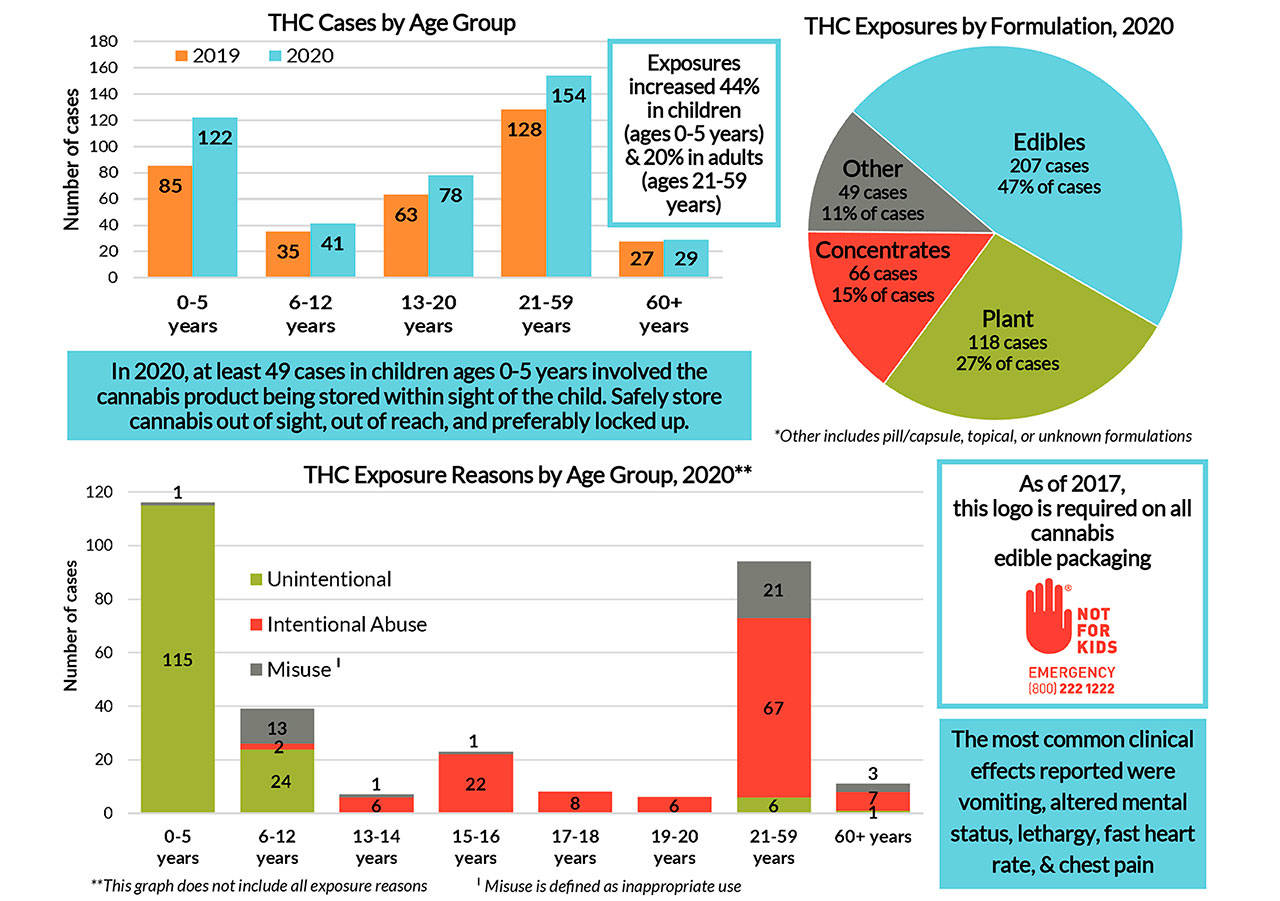A new report from the Washington Poison Center shows that nicotine exposures have decreased in 2020, while cannabis exposures are on the rise.
The report, released Dec. 8, compares nicotine and cannabis exposures from the first 9 months of 2019 against the first nine months of 2020.
“This data is particularly relevant amidst concerns of the COVID-19 pandemic’s impact on substance use, especially with substances that are readily available,” the report reads. The fall in nicotine exposures and rise in cannabis exposures “is both encouraging and concerning: certain substance-related policies, prevention, and harm reduction strategies may be contributing to preventing exposures during this challenging time. However, any exposure is concerning, and trends may shift as both the policy landscape and individual experiences with COVID-19 continue to change.”
The data collected by the WAPC is all voluntary from individuals who call the center for immediate advice, meaning WAPC believes the following numbers are most likely an underrepresentation of the true exposures for any given substance.
For additional prevention and harm reduction education, contact mryuk@wapc.org. For any emergencies with nicotine or cannabis, call the WAPC’s Poison Helpline at 1-800-222-1222.
NICOTINE
During the first nine months 2019, the WAPC received a total of 482 nicotine exposure reports, the vast majority (336) affecting children ages 0 to 5 years of age.
That total number of nicotine exposures fell to 351 during the first 9 months of 2020, a decrease of 27 percent. Again, most of the exposure reports (265) concerned kids aged 0 to 5, meaning nicotine exposures to that age group fell approximately 21 percent.
Raw tobacco accounted for most of the exposures (156) in that 0 to 5 age group, but about a third of exposure cases (68) originated from vaping products. Another 29 exposures were due to nicotine pharmaceuticals.
“In 2020, at least 24 exposures in children ages 0-5 years involved nicotine products being stored within sight of the child,” the report reads. “Safely and securely store all nicotine products in the home: out of reach and out of sight, preferably locked up.”
The WAPC claims that out of all the nicotine exposures reported to them in 2020, 93 percent were managed at home by poison center specialists, saving potential emergency room patients a total of around $284,000.
The center noted that it became illegal to sell tobacco or vaping products to anyone under the age of 21 in January 2020.
“While we cannot draw specific conclusions from our data, this law – along with other strategies – may have contributed to the decrease in nicotine exposures,” the report reads. “This trend offers encouragement during the heightened concern of substance use to cope with increased isolation and stress during COVID-19 pandemic.”
CANNABIS
While most of the nicotine exposures were centered around young children, cannabis exposures affected a wide range of people.
During the first 9 months of 2019, there were 338 total cases of marijuana exposures to the WAPC. This rose to 424 exposure cases in the first 9 months of 2020, an increase of 25 percent.
For the 0 to 5 age group, the number of cases rose from 85 to 122, a 44 percent increase; likewise, in the 21-59 age group, which suffered the most exposures in both 2019 and 2020, exposure reports increased from 128 to 154, a 20 percent jump.
According to the WAPC, close to half (47 percent) of all exposures in 2020 were due to edibles, whereas plant exposures contributed to about 27 percent of exposures. Concentrates accounted for another 15 percent of exposures, and other products the remaining 11 percent of cases.
The poison center lists 115 of the exposures for kids ages 0 to 5 to be unintentional; the rest were undefined, with the exception of one child supposedly using a cannabis product inappropriately, albeit unintentionally.
However, the vast plurality of exposures for the 21 to 59 age group (67) were due to intentional abuse; another 21 exposures were due to unintentional misuse.
The WAPC estimates roughly $266,000 total was saved due to 73 percent of THC exposure reports made to the center were managed at home, rather than at an ER.


